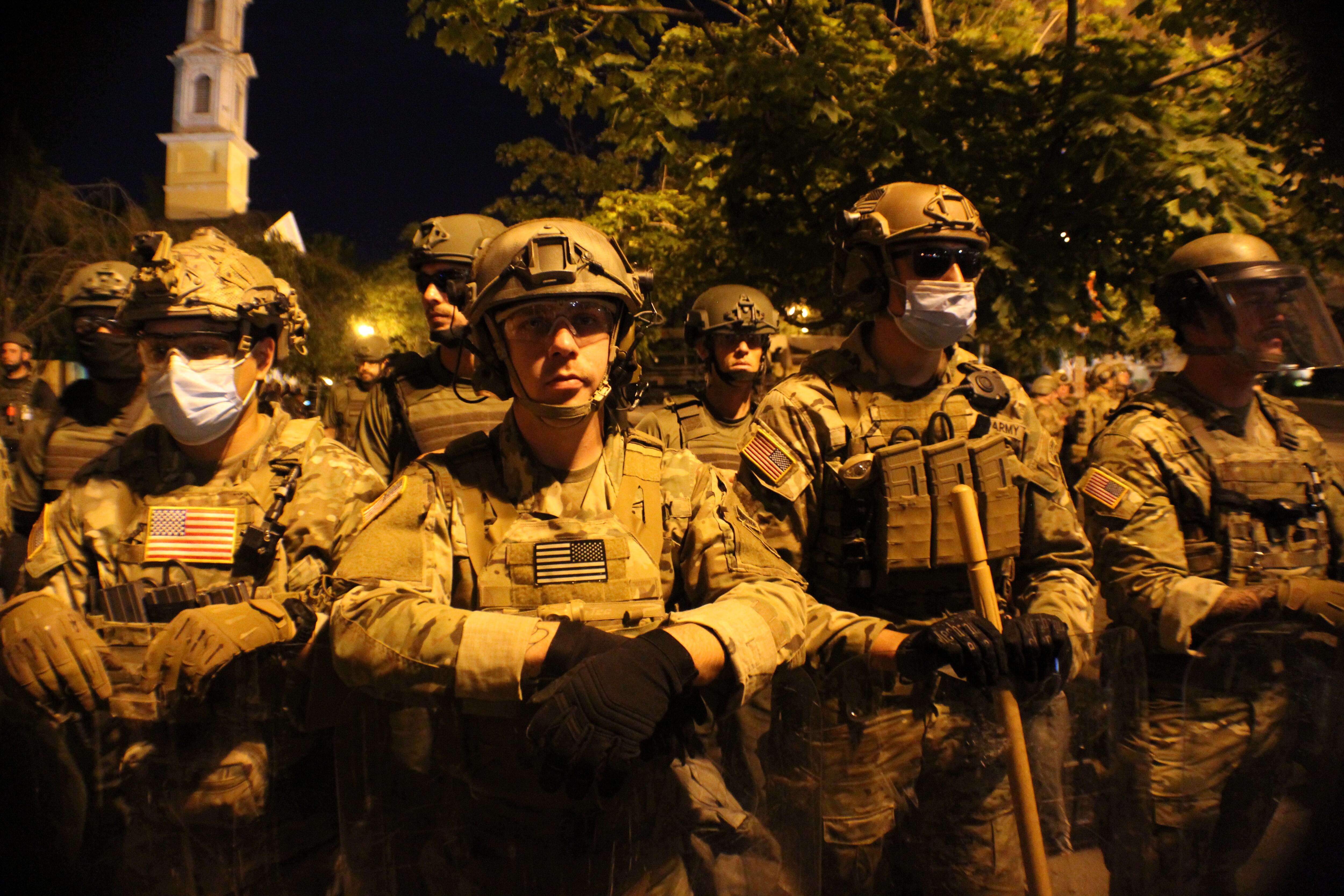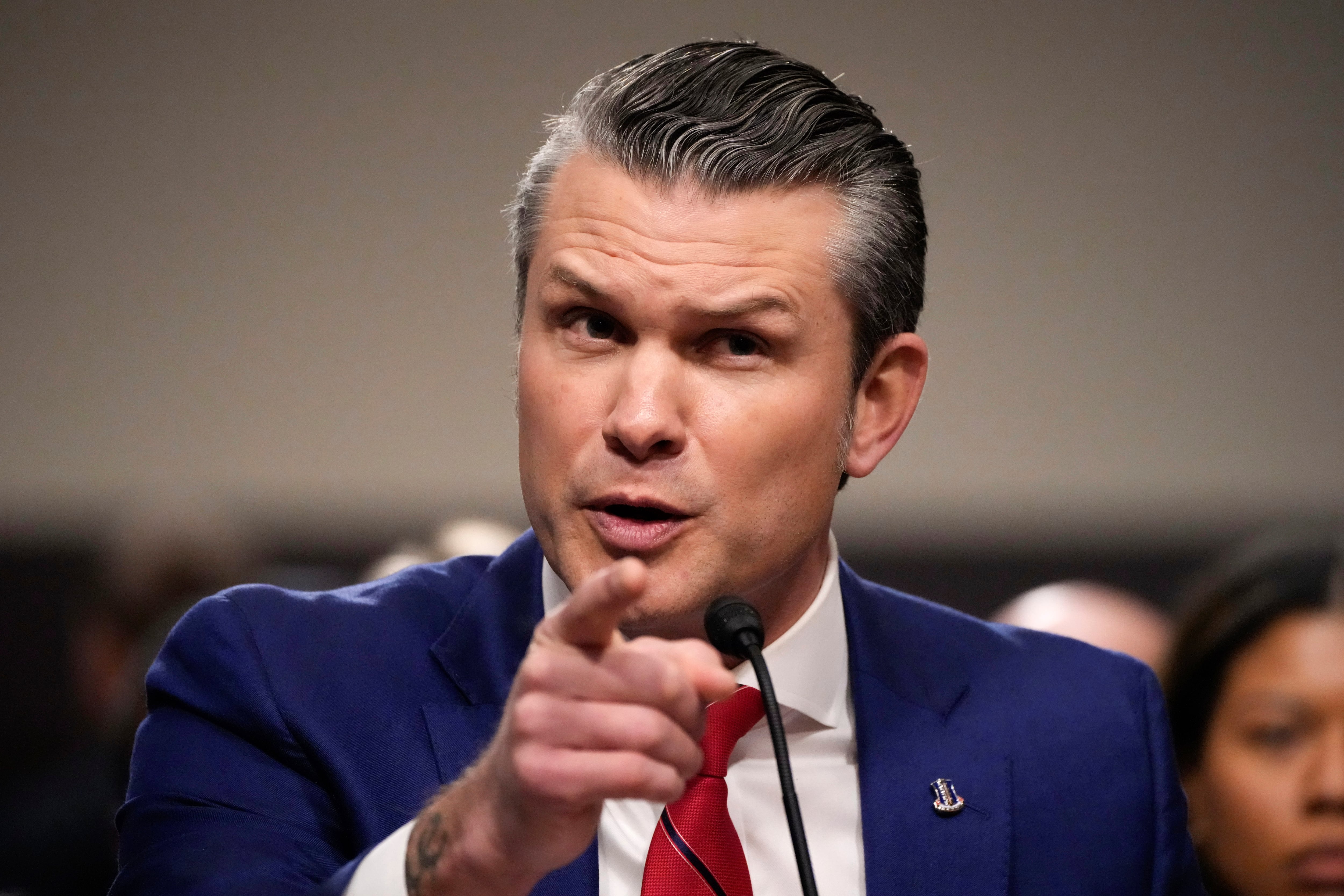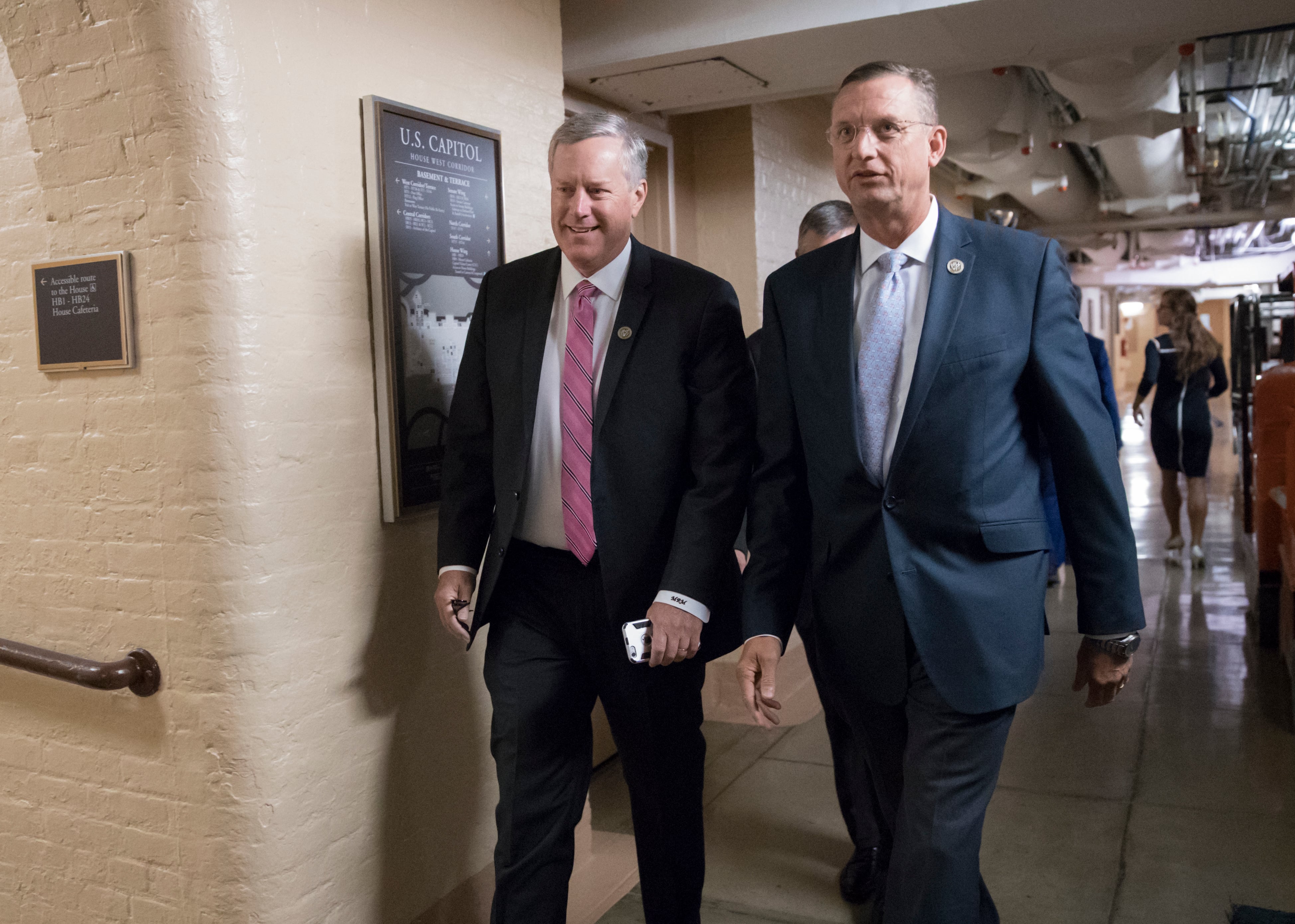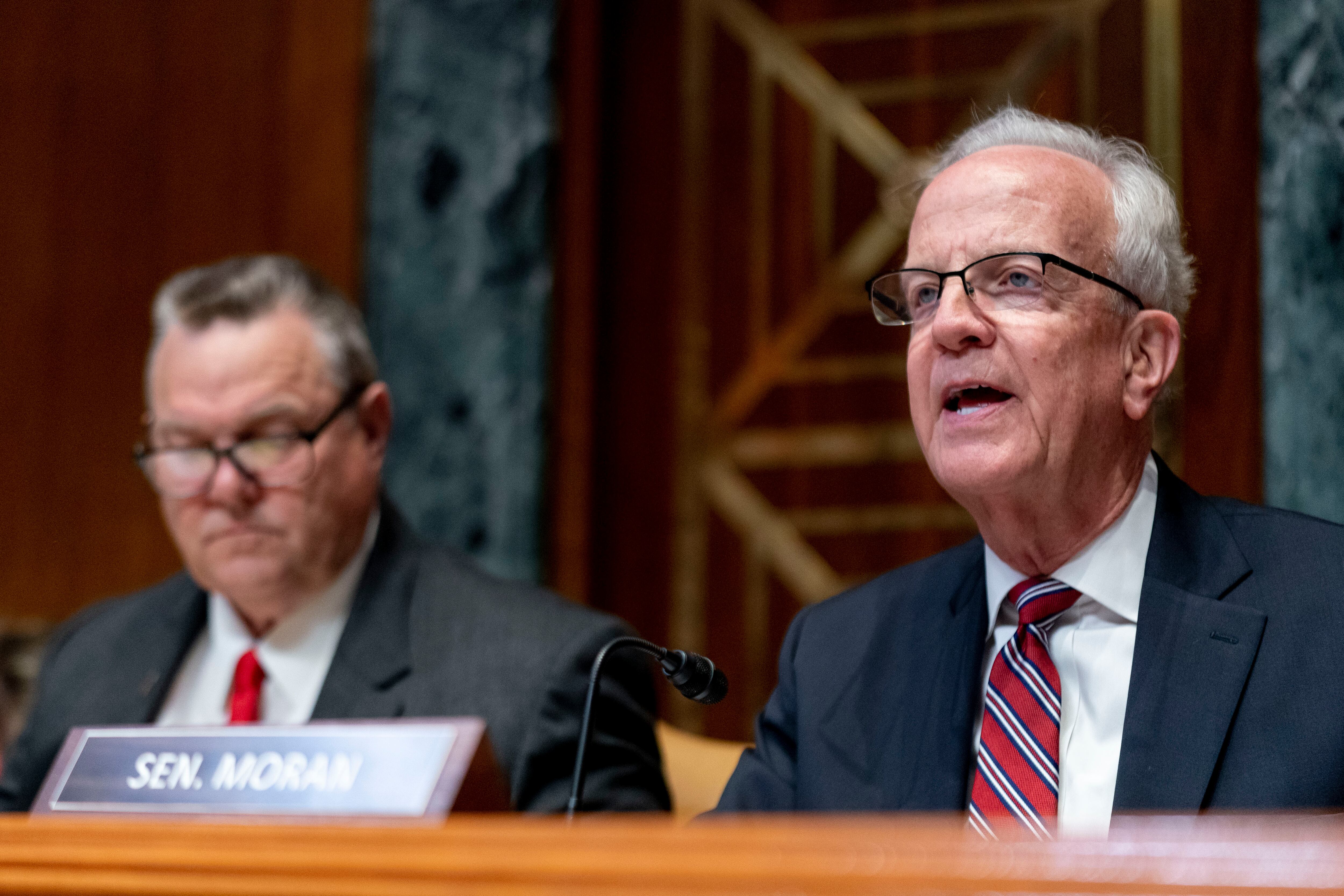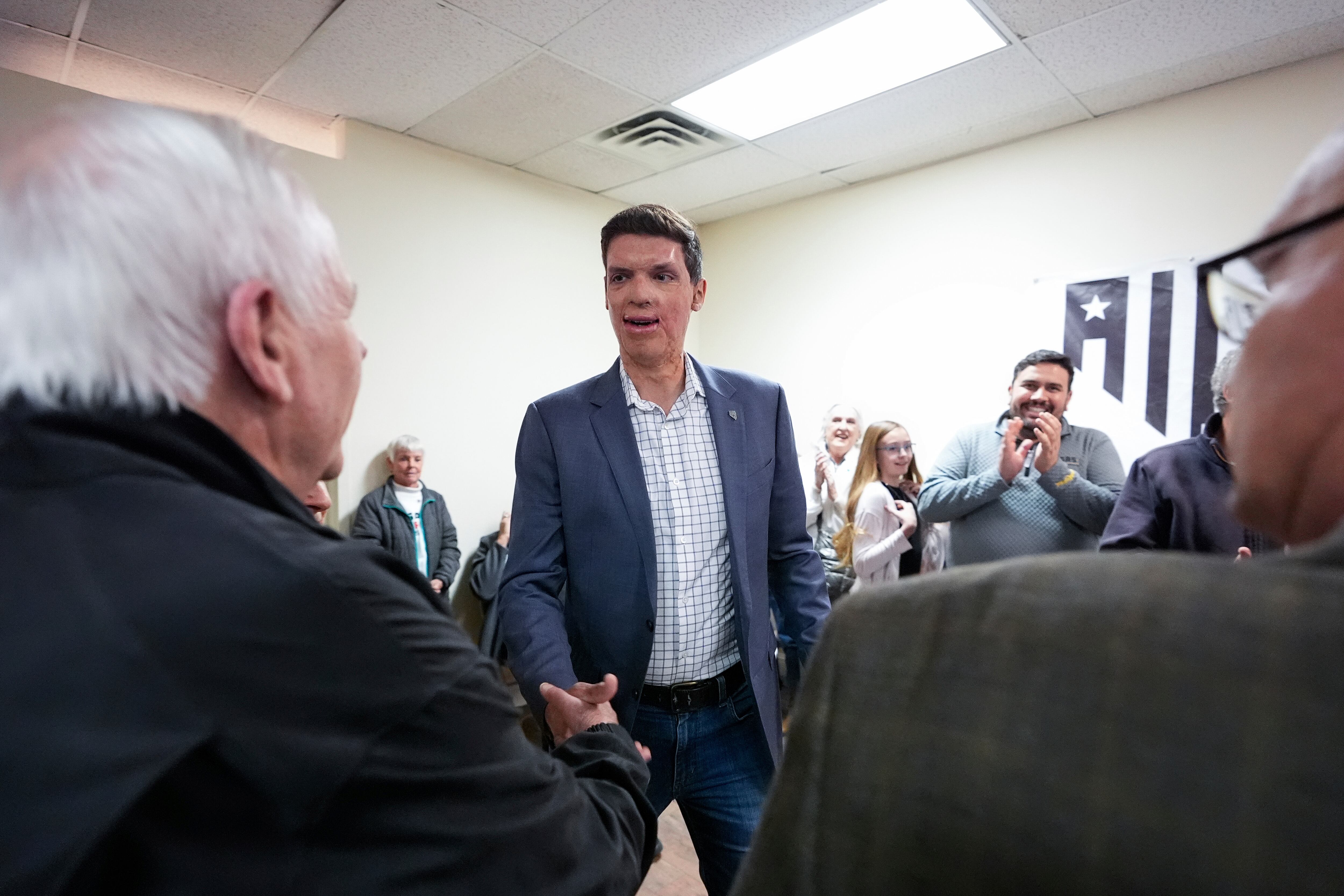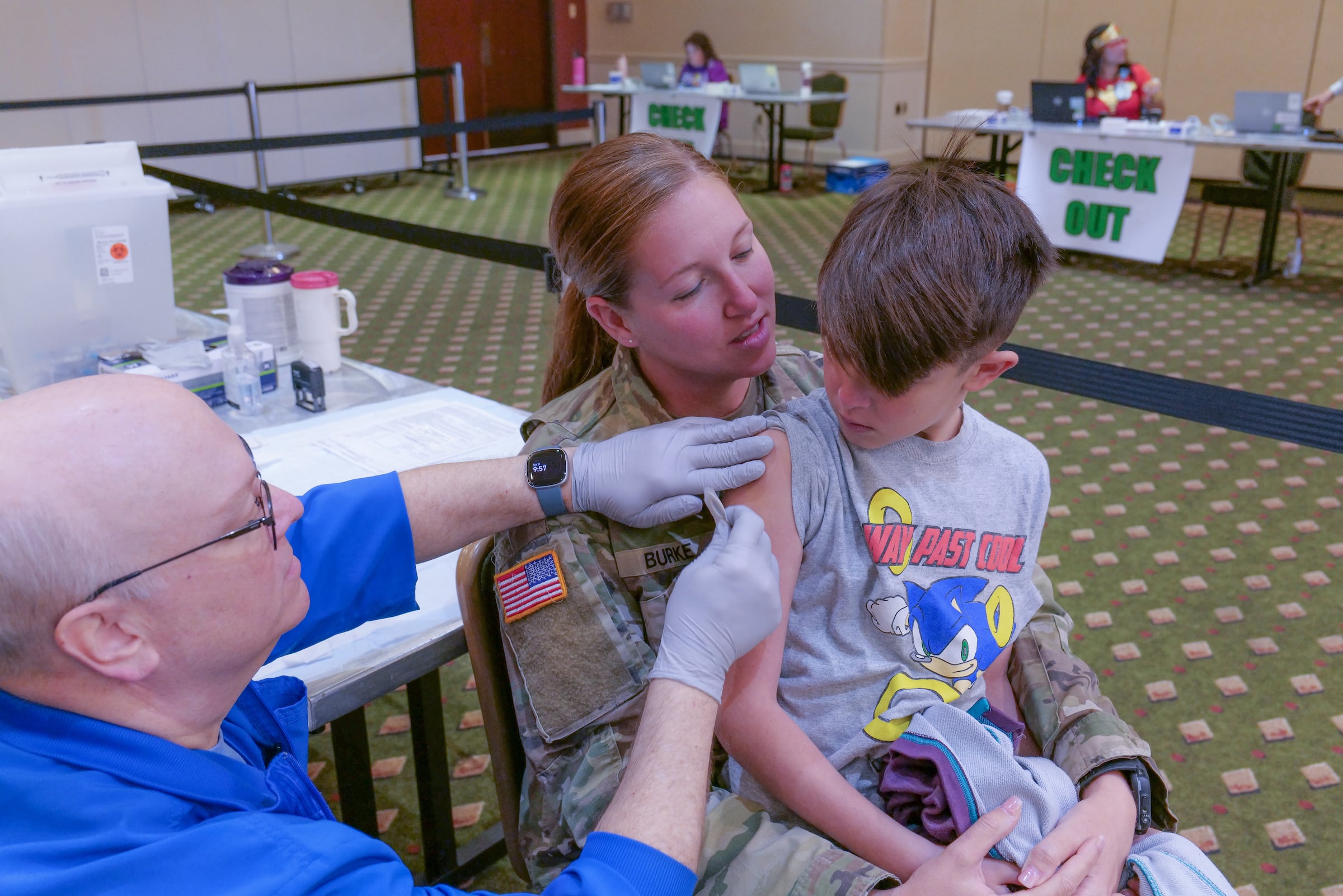As demonstrations in the nation’s capital against racism and police violence have become more peaceful, thousands of National Guard troops called in to deal with civil unrest are beginning to file out.
But as they do, questions remain about the use of force against protesters, the role of the military in restoring order and whether military leaders are concerned about the politicization of the force.
Prior to that, the situation in D.C. had gotten so out of hand that the military “came right up to edge of” bringing in active-duty troops onto the streets of D.C. to deal with violence that resulted in looted business, burned buildings and hundreds of arrests, Army Secretary Ryan McCarthy told reporters Sunday afternoon. In addition, five Guard troops had been injured after being hit with bricks and other projectiles.
However, after another night of mostly peaceful demonstrations sparked by what prosecutors say was the murder of a black man, George Floyd, by a white Minneapolis police officer, President Donald Trump announced via a tweet Sunday morning that he had ordered “our National Guard to start the process of withdrawing from Washington, D.C., now that everything is under perfect control.”
But, Trump warned, they “can quickly return, if needed.”
As of early Sunday morning, there were about 4,900 personnel from 11 states and D.C. were on mission in support of the D.C. National Guard, Army Master Sgt. Michael Houk, a National Guard Bureau spokesman, told Military Times after Trump’s tweet. However, the process of returning out-of-state National Guard home has already begun, he said, adding that while most departures can be expected throughout the week based on availability of transportation, nearby states such as Maryland, New Jersey have already departed, or are about to depart the area.
Only about 1,500 troops were on the streets at any given time, however, with most waiting to be deputized, get health screening and civil unrest training, said Maj. Gen. William Walker, commanding general of the D.C. National Guard, said the media call.
The decision to begin moving Guard troops out of D.C. came after three days of “receded violence” and a Saturday demonstration by about 45,000 people that continued that trend, McCarthy said during the media call.
By 5 p.m. Sunday, Guard troops from Mississippi and Florida — faced with dealing with a tropical storm in addition to ongoing COVID-19 duties — will be headed out, along with Utah and Indiana. Those troops are expected to be gone by no later than 5 p.m. Monday, with other state Guard troops expected to depart over the next 72 hours.
While the Guard’s role in the D.C. protests was to provide unarmed support for local and national law enforcement and largely took place without incident, a situation involving the use of D.C. National Guard helicopters Monday, June 1, is being investigated, McCarthy and Walker said during the media call.

There is what’s known as a 15-6 investigation into the use of two D.C. National Guard helicopters to disperse crowds at around 10 p.m. June 1.
Clarifying his role in the helicopter incident, McCarthy said that it was his decision to order the D.C. National Guard to fly helicopters over protesters “to observe and report” on their activities.
Cell phone video and witness accounts show two D.C. National Guard helicopters, normally designated for use in medical evacuations, hovering low enough to create a deafening noise, snap some trees and spray protesters with rotor wash on Monday.
Walker said that the helicopters, marked with the Red Cross signifying their use as MEDEVAC transports, had clearance to fly low and even land to pick up any injured. Walker, saying he did not give the order to use the helicopters to disperse crowds, declined to offer specifics on how that happened, adding that an investigation should be wrapped up and presented around midweek.
In addition, McCarthy and Walker addressed the role the National Guard played during a protest at Lafayette Square earlier that evening in which demonstrators were hit with some form of tear or pepper gas by Park Police.
At Lafayette Square, Walker said that Guard troops were playing a supporting role clearing the way for Trump and other dignitaries, including Defense Secretary Mark Esper and Army Gen. Mark Milley, chairman of the Joint Chiefs of Staff, to visit St. John’s Episcopal Church, damaged a day earlier by fire set by demonstrators.
Walker said that while Guard troops in Lafayette Square had been pelted with frozen water bottles and eggs by protesters, those troops did not “use force of any kind on protesters. As far as National Guardsmen pushing back, that did not happen. They were never aggressive, never offensive. They took a strictly defensive posture.”
He added that National Guard troops had no tear gas or pepper gas and were not responsible for those actions.
Both McCarthy and Walker said they did not yet know why the Park Police advanced on demonstrators there.
McCarthy said he “did not know what triggered the Park Police to make the clearing” and that an investigation will shine more light on what happened.
“I do not know why they advanced,” Walker said of the Park Police. “We were directed to maintain the line.”
McCarthy said he had not spoken directly with Trump, but had received instructions from Esper and Milley to “marshal enough personnel” to support the mission of securing federal buildings and key monuments.
The decision to bring in additional Guard units came after several days of protests that resulted in violence and damage.
“Sunday evening, security elements were almost overwhelmed,” McCarthy said. “You had buildings damaged and defaced, lit on fire, people trying to get to the fence (by the White House).”
The Guard troops “were in the second row behind law enforcement,” McCarthy said, but still “five soldiers were hit in head with bricks. One had a severe concussion. All five were treated at the hospital and one was sent home. It got very violent down in the park in particular.”
Walker, explaining that National Guard troops “have been protecting the capital and the nation since 1802,” said Guard troops were “the last line of defense” supporting Park Police, Secret Service and other law enforcement agencies.
“On a couple of occasions” protesters “penetrated our line. Our guardsmen, Army and Air, held the line and kept people from advancing onto the White House proper.”
Repeating Esper’s comments about not wanting to utilize the Insurrection Act allowing active-duty troops to participate in quelling civil unrest, McCarthy said that discussion came up because it was unclear how quickly National Guard troops could be activated.
“We didn’t want to do it,” said McCarthy. “Once we went to that escalation it is very difficult” to undo it. Elements of the 82nd Airborne division were “on the other side of the river, but did not cross the line…we did everything we could not to cross that line… We had the 82nd Airborne at Fort Belvoir. That’s how close we were.”
On June 2, the Pentagon announced it moved about 1,600 troops from multiple active duty Army units into the National Capitol Region to support civil authorities operations.
Esper authorized the movement of an infantry battalion designated Task Force 504, assigned to the 82nd Airborne Division’s Immediate Response Force based at Fort Bragg, North Carolina.
In addition, the U.S. Northern Command commander authorized the move of the 16th Military Police Brigade headquarters from Fort Bragg, North Carolina, and the 91st Military Police Battalion from Fort Drum, New York. The brigade provides a command and control element for the battalion, which primarily provides military police and engineering capability.
The New York Times has reported that military officials said that the National Guard’s aggressive approach to crowd control was prompted by a pointed threat from the Pentagon: If the Guard was unable to handle the situation, then active-duty military units, such as a rapid-reaction unit of the 82nd Airborne Division, would be sent into the city.
Senior Pentagon officials, including Milley, were trying to persuade President Trump that active-duty troops should not be sent into the streets to impose order, and that law enforcement and National Guard personnel could contain the level of unrest.
On Monday night, both McCarthy and the Army’s chief of staff, Gen. James C. McConville, pressed Walker, the commanding general of the District of Columbia National Guard, to increase his forces’ presence in the city, according to a senior Defense Department official, the Times reported.
However, during the Sunday press conference, McCarthy and Walker both said they did not feel pressured by the White House to step up a response to the protests.
As for the decision to begin removing National Guard troops from D.C., McCarthy said while he made the decision, “I still have to get concurrence when making the decision from the secretary of defense and, ultimately, the president. He is in charge.”
Unlike the decision to redeploy troops from combat zones, McCarthy said that “every time I make a decision, I have to get concurrence” from Esper or Trump.
The issue of bringing the Guard and active duty troops in to deal with protesters raised a lot of questions about whether the military was being politicized by the White House.
Many senior military leaders raised their voices against racism and in support of the constitutional right to peaceful protest, while many retired leaders, like former Defense Secretary James Mattis, castigated Trump for his use of the military.
RELATED
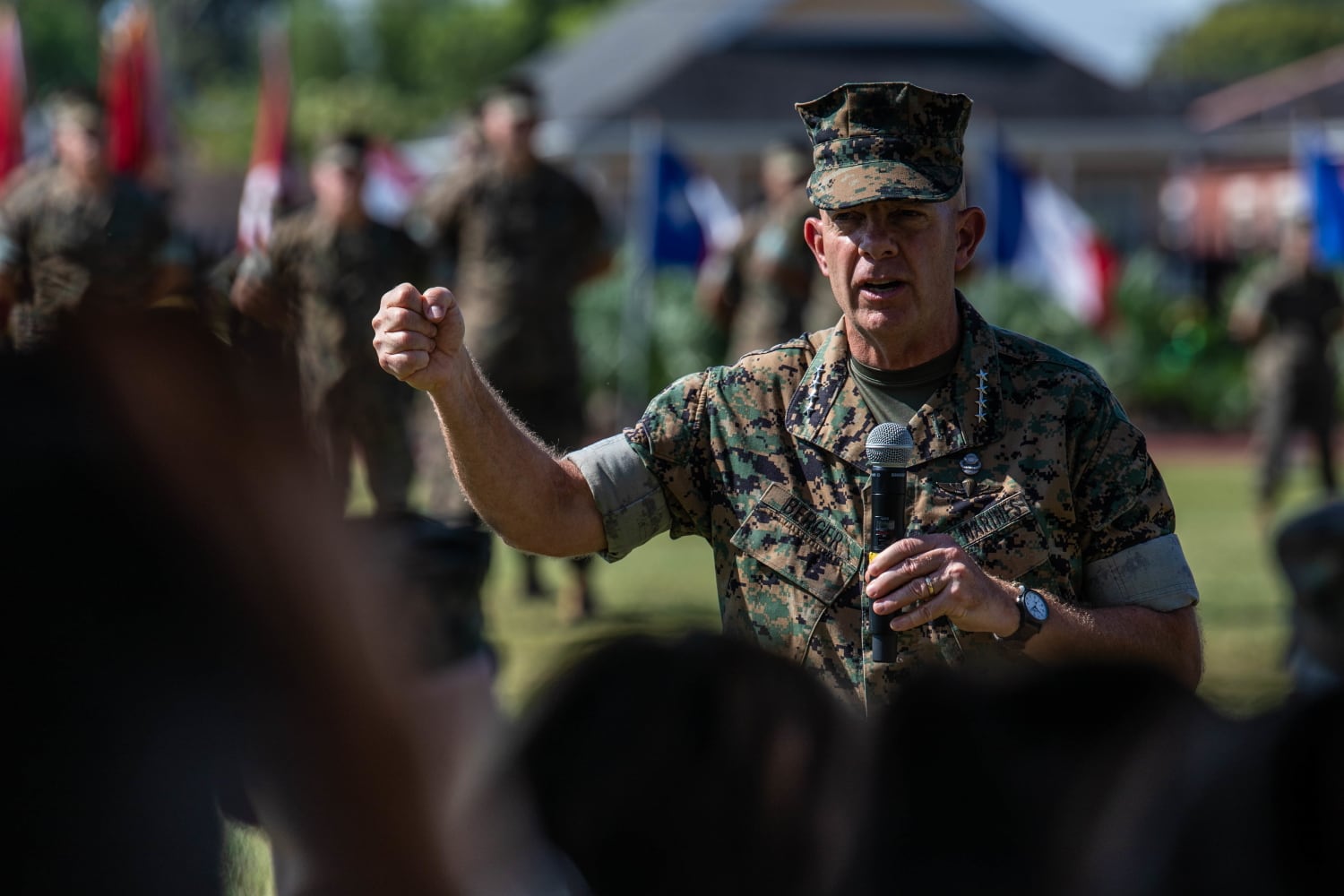
On the ground, National Guard troops were seen taking a knee with protesters, shaking hands or dancing. Elsewhere, the Ohio and Massachusetts National Guard sent troops packing. In the case of Ohio because one guardsman had expressed sympathies to white supremacist groups and the case of Massachusetts because a guardsman took to social media expressing his desire to shoot protesters.
“We are not allowed to protest in uniform,” McCarthy said. “But you see the emotions in the country. In many cases, protesters were hugging soldiers. It is a complex and difficult time. We are a reflection of the country. We are Americans. Anger and frustration leads to the point where people are throwing bricks and burning things. It makes it very challenging."
McCarthy said he and Walker "drove all over the city, talking to soldiers and telling them to keep your cool, keep your cool and continue to keep the temperature down. People are angry and frustrated, as they should be, and we are working really hard with that. We are doing the best we can to keep our cool, but we don’t want soldiers to protest in uniform.”
After the Lafayette Square incident, both Esper and Milley were among military leaders touring D.C. to talk with National Guard troops.
With so many questions raised about how the military has responded, McCarthy said he and Walker expect to testify before the House Armed Services Committee Monday or Tuesday.
“I’ve been intimately involved in the process and can explain a lot of the decisions,” he said when asked why neither Esper or Milley are testifying. “General Walker, as the commander, was pretty well-suited to explain our actions” that took place between May 29 and June 7.
Neither Esper nor Milley “refused” to testify before the HASC, Navy Cmdr. Sean Robertson, a Pentagon spokesman, said last week.
“The DoD legislative affairs team remains in discussion with the HASC on this request. In the meantime, DoD has committed to provide Army Secretary McCarthy, Army Chief of Staff Gen. McConville, and DC National Guard Commanding General Maj. Gen. Walker to brief the committee next week on the presence of the National Guard in Washington, D.C., this past week.”
Howard Altman is an award-winning editor and reporter who was previously the military reporter for the Tampa Bay Times and before that the Tampa Tribune, where he covered USCENTCOM, USSOCOM and SOF writ large among many other topics.
